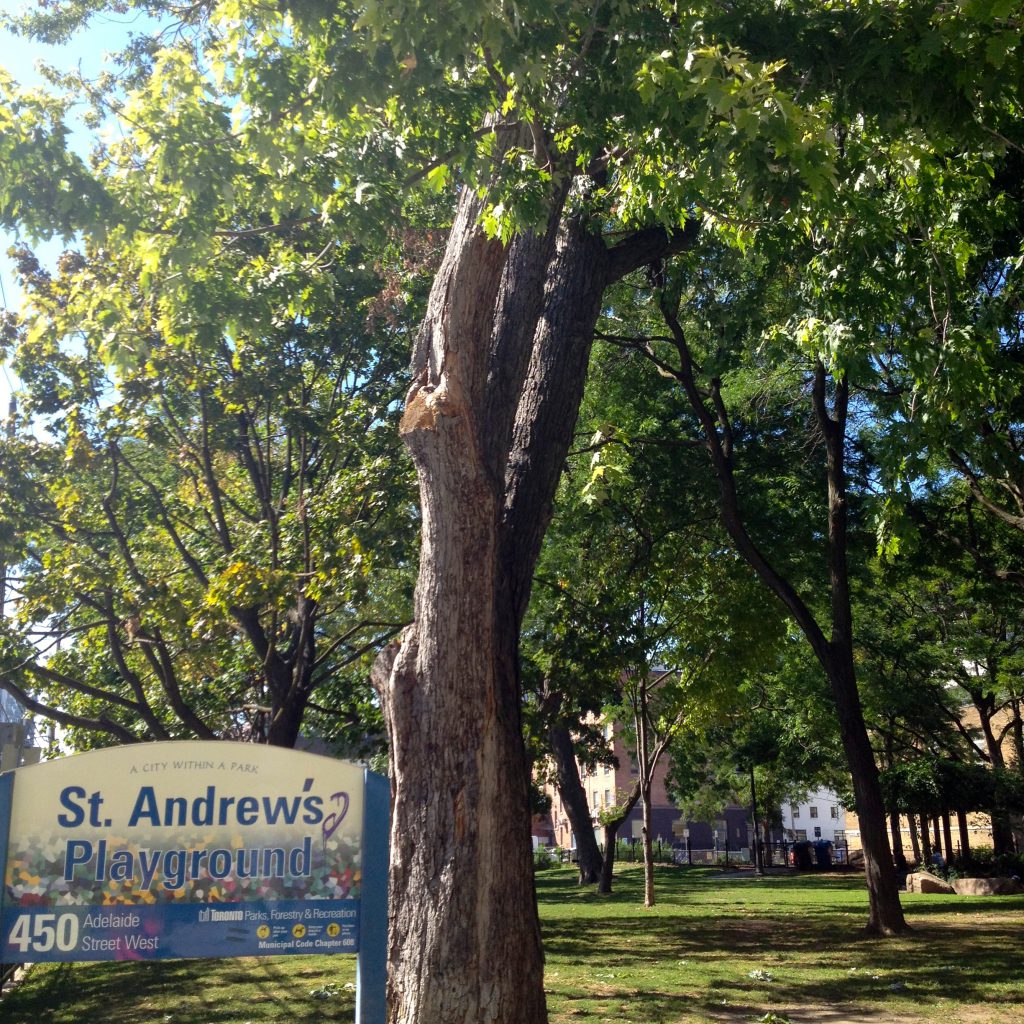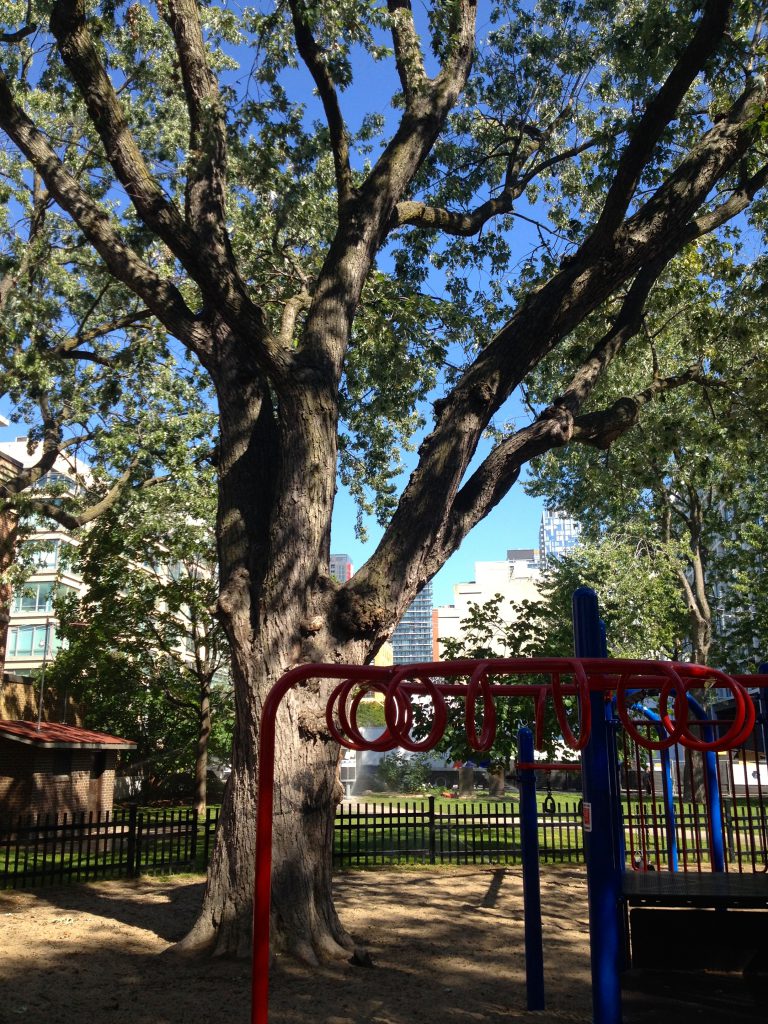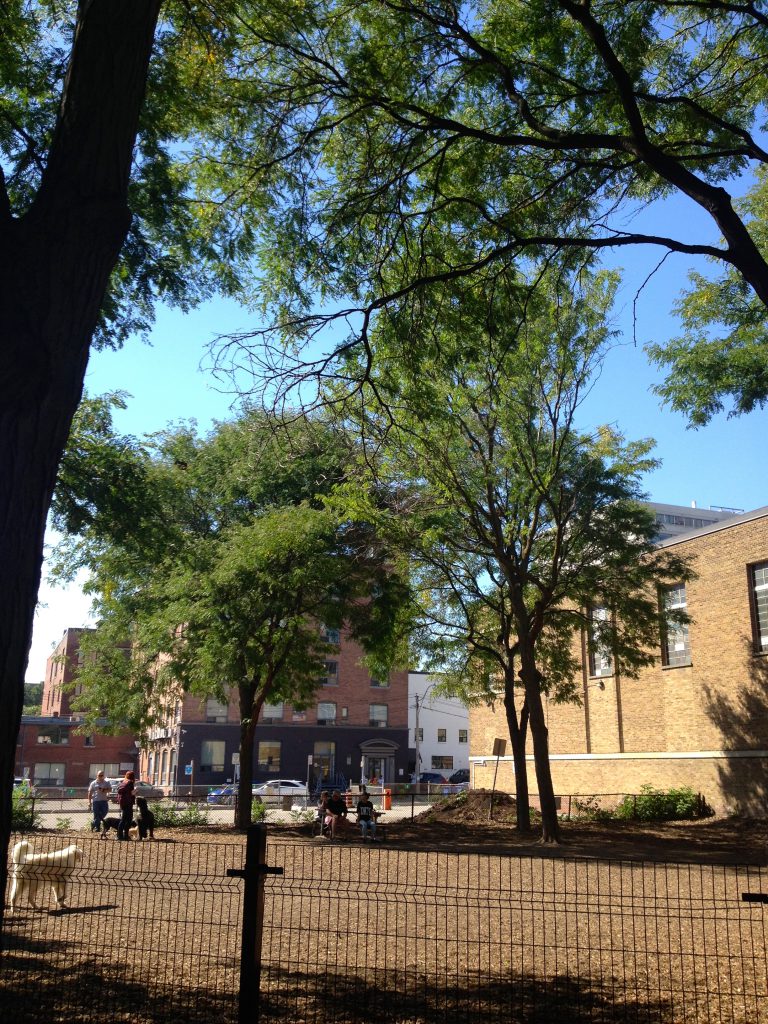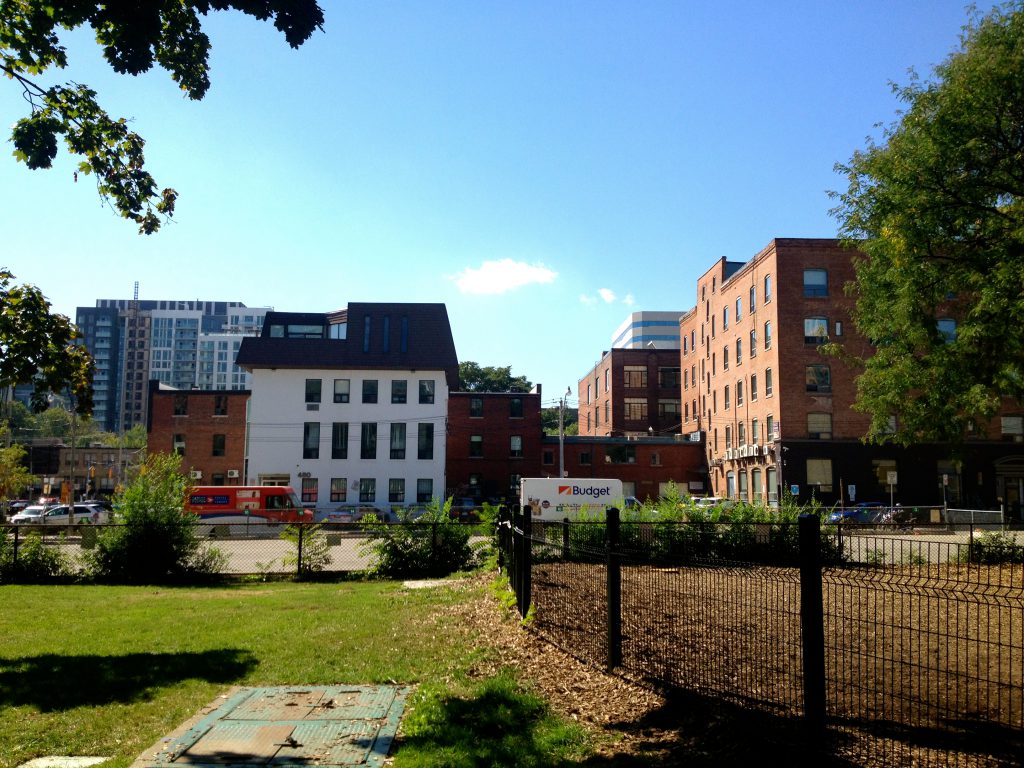“A look at a few of the park’s historical landmarks”
————————————————————————–
A park is a living thing and every park has a distinct personality. One way of getting to know a park is to look at its trees. The St. Andrews’ Playground, adjacent to the south wall of the Waterworks building, has some of the oldest perennial members in the neighbourhood. Park Supervisor for Ward 20, Brian Green, tells us more about the trees in the historic park.
At the entrance to the park at the northwest corner Brant and Adelaide Street, an old Silver Maple stands at attention. With its broad trunk and a visible wound from a large branch lost long ago, this old Silver Maple has the aura of a grandfather with war stories to tell.
“Five big Silver Maples act as the sentries of the park. They have reliant roots, which no doubt stretches the whole length of the park”, says Green in a reverential tone.
In the center of the park, a cluster of deciduous and coniferous trees creates a central focal point for the park and cast’s shade over a group of benches and sitting rocks.
When you walk through the park, you’ll notice one tree is taller than all the rest and casts a shadow over the play structures.
“That one tree is as old as the playground itself,” says Green, noting that the playground was created in 1909 and was the first supervised play area for children in Toronto. The dog park in the west end provides shade for canines through a circle of teenaged honey locust trees.
Just south of the dog park, there is less shade. In fact, there is a sunny gap where trees once stood.
“The park recently lost about a dozen trees to the emerald ash borer”, explains Green. The invasive insect has destroyed many ash trees in Toronto. “It flies from tree to tree laying eggs, and the eggs bore into the bark and stop the supply of nutrients to the leaves,” explains Green. “The trees die from the top down.”
The City of Toronto plans to replace hundreds of ash trees with other species over the next several years. “We’re putting in a variety of trees in case of another outbreak,” says Green.
Part of the redevelopment of the Waterworks building will include an expansion of the park by 20% when the existing surface parking lot on the west side is removed upon the completion of the Waterworks. New plantings will also appear in St. Andrew’s Playground over the next three to five years. “Tree lovers can watch for a variety of native trees to sprout there eventually”, says Green, “look for Sugar Maple, Silver Maple, Red and White Oak, and Hackberry saplings”.






